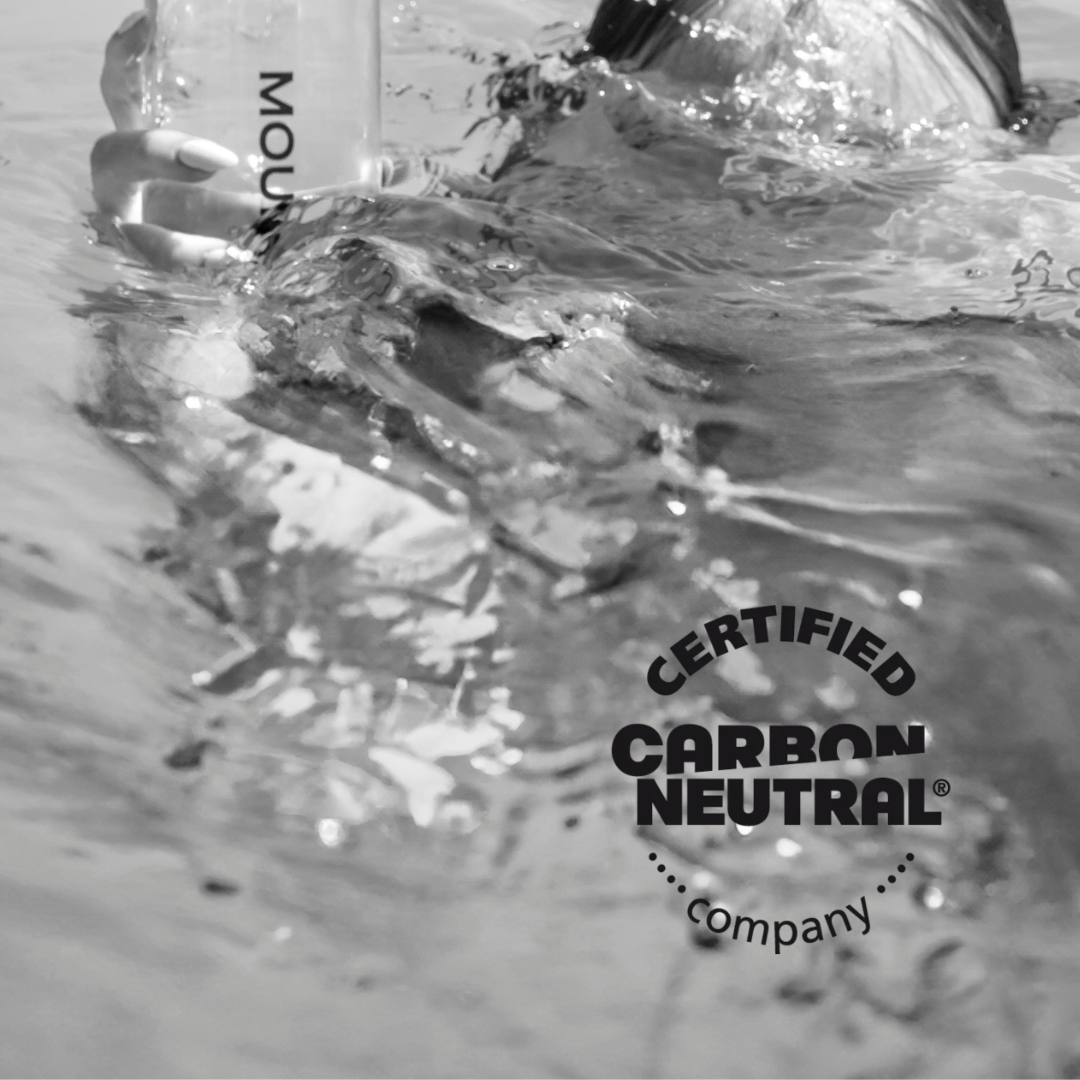When we think about the quality of our drinking water, pH might not be the first thing that comes to mind. However, understanding the pH level is crucial for ensuring it's safe and healthy for consumption. In South Africa, where water quality can vary significantly, knowing the basics about pH can help us make informed choices.
The pH scale, which ranges from 0 to 14, measures how acidic or alkaline a substance is. For drinking water, a pH level between 6.5 and 8.5 is generally considered acceptable. Water outside this range can have implications for our health and the plumbing in our homes. Let's explore why pH matters and what we need to know to keep our drinking water in check.
Key Takeaways
-
Understanding pH is Crucial: The pH level of drinking water affects its safety and taste. Ideal pH ranges from 6.5 to 8.5, ensuring it is both palatable and healthy to consume.
-
Health Implications: Drinking water with imbalanced pH levels can lead to health issues. Low pH (acidic) can cause digestive problems, while high pH (alkaline) can disrupt the body's natural balance.
-
Testing pH Levels: Regularly measuring the pH of your drinking water using pH test strips or digital metres ensures it remains within a safe range, helping prevent potential plumbing and health issues.
-
Impact on Water Quality: Water with pH levels outside the recommended range can corrode pipes and cause metals to leach, or leave a bitter taste and build-up in appliances.
-
Natural and Human Influences: Natural factors like rainfall and mineral deposits, alongside human activities such as agricultural runoff and industrial waste, can all affect the pH levels of different water sources.
- Regulating pH: Using household methods like adding lemon juice for high pH or baking soda for low pH, and advanced solutions like water ionisers or neutralising filters, can help manage and maintain optimal pH levels in drinking water.
What Is pH?
Alright, let’s dive right into the nitty-gritty of pH. It's a term you’ve probably seen tossed around, especially when talking about drinking water, but what does it really mean? You’ve likely heard about the importance of pH levels for everything from pool maintenance to skincare. So, let’s clear up any confusion.
Understanding pH Scale
The pH scale measures how acidic or alkaline a substance is, ranging from 0 to 14. Zero is as acidic as it gets, think battery acid, while 14 is super alkaline, like lye. Pure water rests comfortably in the middle at 7, which is neutral. If we move towards the lower end, we encounter acids, and moving higher, we find bases. When it comes to drinking water, we typically aim for a pH between 6.5 and 8.5 to keep things safe and tasty.
Measuring pH Levels
You might wonder, “How do we measure pH levels?” Great question! There are simple ways to check the pH of your drinking water. You can grab pH test strips from a local store, dip them in your water, and compare the colour change to a chart. For more accuracy, digital pH metres come in handy. Laboratories use sophisticated equipment, but a trusty digital metre at home does the job for most of us.
Here’s a fun bit: imagine your smart friend, Anna, who’s all about health. She monitors her water like a hawk, keeping it between 6.5 and 8.5, ensuring it’s perfect. She even got a digital metre to make sure her Mountain Falls spring water is just right, never too acidic or alkaline.
Remember, constantly checking the pH can help keep your drinking water balanced, ensuring it’s both safe and enjoyable for you and your family. Now, let’s start making those informed choices with confidence.
Importance of pH in Drinking Water
Ever wondered why we obsess over the pH of drinking water? It's not just some scientific jargon; it actually impacts the quality and safety of what we drink every day. Let's dive in.
Ideal pH for Drinking Water
We’ve all probably heard that the pH level of drinking water should be between 6.5 and 8.5. But why? Well, water within this range is generally considered safe and palatable. For example, Mountain Falls Natural Spring Water has a pH level precisely calibrated to ensure it's refreshing and beneficial for your health. Imagine you're filling your bottle after a long hike – knowing the pH is just right adds peace of mind!
Effects of pH on Water Quality
Let’s chat about water quality. If the pH is too low (acidic), it can corrode pipes, leading to metals leaching into the water. Yikes, right? This is one reason you might find certain areas take their water testing very seriously. On the flip side, if pH is too high (alkaline), it can leave a funny taste in your mouth and scale up your appliances. Picture making a cup of tea with water that tastes off – no thanks! Our Mountain Falls water is always spot-checked to maintain balanced pH, ensuring you sip only the best.
Health Implications of Different pH Levels
Health-wise, the pH of drinking water can affect us more than we might think. Drinking water with a low pH can make your stomach more acidic, potentially leading to digestive issues. Meanwhile, a high pH might disrupt your body’s natural pH balance. Medical studies show that long-term consumption of imbalanced pH water can lead to various health concerns (source: National Institutes of Health). At Mountain Falls, we ensure our water's pH level is just right so you can stay hydrated without a worry.
By understanding the importance of pH in drinking water, we can all make more informed choices about what we drink. Whether you're enjoying a bottle of Mountain Falls spring water on a mountain trail or sipping it at home, knowing it's pH-perfect means one less worry on your mind.

Testing and Regulating pH Levels
You might be curious about how to figure out the pH of your drinking water. Let's walk through this together.
Methods of Testing pH
There are a few ways to test the pH of drinking water. One simple method is to use pH test strips. These strips change colour when dipped in water, indicating its pH level. It's straightforward and quick. For a more accurate reading, consider using a pH metre—a digital device that gives precise pH readings. If you're really curious, you could even send a water sample to a laboratory for detailed analysis.
Imagine this: You're at home with a Mountain Falls Natural Spring Water bottle, feeling like a scientist. You dip a pH strip in and wait for the colour to change...
Interpreting Test Results
Once you've got your results, you might wonder what they mean. If your water's pH is between 6.5 and 8.5, it’s generally considered safe and palatable. Anything outside this range might taste off or even pose health risks. Remember when Anna, in our earlier story, checked her water's pH daily? She kept it between 7 and 8, ensuring optimal taste and safety.
Picture this scenario: You're having a dinner party and proudly show your friends your pH-testing prowess. "Look, our water's at a perfect 7.8!" you say, impressing everyone.
Regulatory Standards for Drinking Water
Regulatory standards ensure our drinking water remains safe. The World Health Organisation (WHO) recommends a pH range of 6.5 to 8.5. We can rely on these standards to maintain our water’s quality. For instance, Mountain Falls adheres to these guidelines, guaranteeing that every bottle balances health and taste.
Visualise chatting with a friend about this: "Did you know Mountain Falls Natural Spring Water is always within the perfect pH range? That's why it tastes so good and is safe to drink."
Remember, keeping an eye on the pH of your drinking water isn’t just for scientists. It’s a simple yet crucial step to ensure you’re consuming water that’s both safe and pleasant. So, why not try testing your water's pH today? It’s easy, informative, and could make all the difference.
Common pH Levels in Various Water Sources
Let's dive into the pH levels of different water sources. Understanding these variances helps ensure the drinking water in your glass meets all quality standards.
Tap Water
Tap water usually falls between 6.5 and 8.5 on the pH scale. But imagine this: one day, you turn on the tap and notice the water tastes a bit off. You grab a pH test strip and, lo and behold, it reads 6.2. What's going on here? The pH can fluctuate due to pipe corrosion or the local water treatment process. It's essential to test your tap water regularly. It keeps you in control of what you're drinking and ensures it's both safe and tasty.
Bottled Water
Ever wonder why some bottled water has a crisp, refreshing taste? Most bottled water like Mountain Falls Spring Water maintains a pH between 7 and 8.5. This neutral to slightly alkaline range caters to a pleasant drinking experience. Picture this: you're on a hike, and you pull out your trusted bottle of Mountain Falls. You sip and feel refreshed. That's the magic of controlled pH levels. We recommend always checking the label to know what you're sippin on.
Natural Water Sources
Natural water sources, such as rivers and lakes, can have widely varying pH levels. These can range from as low as 6 to over 8. Imagine you're on a camping trip. You decide to fill your bottle from a nearby stream. Before drinking, you test its pH and find it's around 6. This acidity might stem from natural minerals or local environmental factors. Drinking such water could be risky if the pH is too far from the safe range of 6.5 to 8.5. Always be cautious and consider boiling or treating the water.
To sum up, keeping an eye on the pH levels of your drinking water ensures you know exactly what you're putting into your body. Whether it's tap, bottled, or natural water, knowing the pH helps you maintain good health and enjoy a pleasant drinking experience.

Influences on Water pH
Hey there, ever wondered why some drinking water tastes different from others? It’s all about the pH level. Here’s what affects the pH of your drinking water:
Natural Factors
Nature's got its own tricks up its sleeve. For example, rainwater absorbs carbon dioxide from the atmosphere, turning slightly acidic with a pH around 5.5. Streams and rivers love to play with rocks and minerals, which can alter their pH dramatically. Remember Anna from earlier? When she tests water from a local stream, she finds fluctuating pH levels depending on recent rainfall, mineral deposits, and even plant growth. It’s a water chemistry jungle out there!
Human Activities
Humans are the ultimate tinkerers. Agricultural runoff, industrial waste, and even household activities can impact the pH of drinking water. Your neighbour's lawn fertiliser might seep into groundwater, making it more acidic. Factories sometimes discharge waste into nearby water bodies, skewing the pH either way. We once tested a well near an industrial area, and guess what? The pH was off the charts—bad news for anyone relying on that well for clean drinking water.
Treatment Processes
Have you ever wondered what happens to water before it pours out of your tap? Treatment plants adjust pH levels to keep your drinking water safe and tasty. They add chemicals that neutralise the water’s acidity or alkalinity. At Mountain Falls, where we source spring water, a meticulous balance is maintained to ensure a pH level that’s both safe and pleasant for drinking. It's like fine-tuning a musical instrument—get it right, and you have harmony; get it wrong, and you've got a noisy mess.
Managing pH Levels in Drinking Water
Alright, let's talk about how to keep the pH of our drinking water in check, shall we? It’s crucial to ensure that we enjoy a refreshing sip without any worries. Depending on the pH levels, we must take different measures. Let’s dive into the specifics.
Addressing High pH
Imagine you, me, and our friend Sarah gathering for a hearty discussion. Sarah tests her water and finds that the pH is too high. What’s her next move?
Firstly, we can add acidic substances to neutralise the high alkalinity. Lemon juice or vinegar often works wonders. It's like balancing a seesaw by adjusting weight on both sides.
Another way involves installing a water ioniser. Many households have successfully used these devices to maintain optimal pH balances.
Did you know? High pH water might add a bitter taste and can lead to mineral deposits in your pipes (source: Water Systems Council). Keeping tabs on pH ensures we avoid these plumbing headaches and continue to enjoy our water without any nasty surprises.
Addressing Low pH
Picture us at a Mountain Falls retreat, sipping on their pristine spring water, and discovering it’s dipping into low pH territory. What do we do?
One method is to use neutralising filters. These filters are often filled with calcite or other alkaline materials. They essentially work like magic, gradually raising the pH as the water passes through.
Another tip involves adding baking soda. A small amount can elevate the pH safely, making the water more alkaline. Pro tip: bake a tiny batch first to ensure the amounts are just right.
Low pH water can be corrosive, damaging plumbing and potentially leaching harmful metals (source: Environmental Protection Agency). By maintaining a stable pH, we ensure our water remains pleasant and safe.
For those curious, Mountain Falls’ distilled water is naturally balanced, pure, and free from impurities, making it a reliable choice if you worry about fluctuating pH levels. Keeping our drinking water balanced isn’t just a chore, it’s a commitment to our wellbeing.
Conclusion
Understanding the pH of our drinking water is crucial for maintaining both our health and our home’s plumbing. By regularly testing and adjusting the pH levels, we can ensure our water remains safe and pleasant to drink. Whether we're dealing with high or low pH levels, there are effective solutions available to balance it out. For those looking for a hassle-free option, Mountain Falls' naturally balanced distilled water offers a dependable choice. Let's prioritise balanced drinking water for a healthier lifestyle.
Frequently Asked Questions
How does pH in water affect humans?
If water has a low pH level, it's very acidic. Drinking acidic water regularly can have adverse effects on your health. Regular consumption of acidic water can cause acid reflux and frequent heartburn — it also doesn't taste very good. Water with an extremely low pH level can even corrode certain metals.
What are some facts about pH balance in water?
Water has a neutral pH of 7, which indicates that it is neither acidic nor basic. The scale ranges from 0 (very acidic) to 14 (very basic). It is normal for water to have a range of between 6.5 and 8.5 on the scale.
What happens if water pH is too low?
Water with a low pH could contain elevated levels of toxic metals, cause premature damage to metal piping, and have associated aesthetic problems such as a metallic or sour taste, staining of laundry, and "blue-green" staining of sinks and drains.
How can you raise the pH of drinking water?
To raise the pH of drinking water, you can use neutralising filters with alkaline materials or add baking soda. These methods safely increase the water’s pH level, ensuring it remains safe for consumption.
How can you lower the pH of drinking water?
To lower the pH of drinking water, you can add acidic substances like lemon juice or use water ionisers. These methods help bring the water pH to a safer, more balanced level.
Why is maintaining a balanced pH in drinking water important?
Maintaining a balanced pH in drinking water helps avoid plumbing issues, ensures the water is safe for consumption, and prevents potential health risks associated with too acidic or too basic water.



